The Hijrah (emigration), the emigration of the Prophet (peace be upon him and his family) and Muslims from Mecca to Medina, marks one of the most decisive turning points in Islamic history. It signified not only the escape from oppression but also the beginning of a new era in which Islam transformed from a persecuted faith into a flourishing community and state. The Prophet’s Hijrah is so central that it later became the starting point of the Islamic calendar, symbolizing renewal, struggle, and divine support. This study aims to explore the historical events, spiritual dimensions, and socio-political significance of the Prophet’s Hijrah, highlighting its role as a foundational moment in Islam and drawing lessons that remain relevant for Muslim societies today.
Historical Background
Before the Prophet’s Hijrah, the Muslims in Mecca endured years of hardship and persecution. The Quraysh elite viewed the Prophet Muhammad’s (PBUHH) message as a threat to their religious, social, and economic dominance. Early Muslims, particularly the weak and marginalized, were subjected to torture, social boycott, and exile.
The situation became more severe after the death of Abū Ṭālib, the Prophet’s uncle and protector, and Khadījah, his supportive wife, in what is known as the ʿĀm al-Ḥuzn (“Year of Sorrow”)[1]. Without tribal protection, the Prophet’s life was increasingly endangered. Attempts to seek refuge in Ṭāʾif ended with rejection and humiliation. Ultimately, the Quraysh leadership conspired to assassinate the Prophet (PBUHH), forcing him to plan his departure secretly.
The Command of Allah and Preparation for Hijrah
When the hostility in Mecca reached its peak and the Quraysh plotted to assassinate Prophet Muhammad (PBUHH), Allah granted him permission to migrate. According to Qur’anic verses, migration for the sake of preserving faith was divinely sanctioned:
إِنَّ الَّذِينَ تَوَفَّاهُمُ الْمَلَائِكَةُ ظَالِمِي أَنفُسِهِمْ قَالُوا فِيمَ كُنتُمْ ۖ قَالُوا كُنَّا مُسْتَضْعَفِينَ فِي الْأَرْضِ ۚ قَالُوا أَلَمْ تَكُنْ أَرْضُ اللَّهِ وَاسِعَةً فَتُهَاجِرُوا فِيهَا ۚ فَأُولَٰئِكَ مَأْوَاهُمْ جَهَنَّمُ ۖ وَسَاءَتْ مَصِيرًا
“Indeed, those whom the angels take away while they are wronging themselves, they ask, ‘What state were you in?’ They reply, ‘We were oppressed in the land.’ They say, ‘Was not Allah’s earth vast enough so that you might migrate in it?’ The refuge of such shall be hell, and it is an evil destination” (Qur’an 4:97).
According to Faqih Imani, “the verse was revealed and counted guilty those who did not migrate and stayed in the environment of infidelity. The verse blamed them because they had wronged against themselves. Thus, it is obligatory to migrate from the centre of infidelity, and staying there to be a multitude of the soldiers of disbelievers, is unlawful[2]“.
The Prophet (PBUHH) prepared carefully and with utmost secrecy. The Quraysh, realizing that his departure would strengthen Islam, conspired to kill him by selecting assassins from different tribes so that no single clan would bear responsibility for his blood[3]. The Prophet was divinely informed of this plot (Qur’an 8:30).
Therefore, on Thursday night of the Rabi’ Awwal 1 of the year 14 after Bi’that/September 13, 622, the Prophet (PBUHH) left Mecca, and Imam Ali ibn Abī Ṭālib (a.s) was asked to sleep in the bed of the Prophet, so that the assassins would not realize the departure of the Prophet (PBUHH) and not chase him. The night is called Laylat al-Mabit (The Night of the Sleeping). Verse 207 of Qur’an 2 was revealed about the sacrifice of Imam ‘Ali (a.s) for saving the life of the Prophet[4].
These preparations show that the Prophet’s Hijrah was not merely a spontaneous escape but a divinely guided mission executed with careful planning, reliance on trustworthy companions, and complete trust in Allah’s promise of protection.
The Journey to Yathrib (Medina)
After leaving his home in Mecca, the Prophet Muhammad (PBUHH) began the perilous journey to Yathrib, later known as Medina. Pursued by Quraysh horsemen determined to capture or kill him, he took refuge in the cave of Ghar Thawr[5]. The Qur’an alludes to this moment:
إِلَّا تَنصُرُوهُ فَقَدْ نَصَرَهُ اللَّهُ إِذْ أَخْرَجَهُ الَّذِينَ كَفَرُوا ثَانِيَ اثْنَيْنِ إِذْ هُمَا فِي الْغَارِ إِذْ يَقُولُ لِصَاحِبِهِ لَا تَحْزَنْ إِنَّ اللَّهَ مَعَنَا ۖ فَأَنزَلَ اللَّهُ سَكِينَتَهُ عَلَيْهِ وَأَيَّدَهُ بِجُنُودٍ لَّمْ تَرَوْهَا
“If you do not help him, then Allah certainly helped him when the faithless expelled him, as one of two [refugees], when the two of them were in the cave, he said to his companion, ‘Do not grieve; Allah is indeed with us.’ Then Allah sent down His composure upon him, and strengthened him with hosts you did not see…” (Qur’an 9:40).
Islamic tradition recounts how a spider spun its web and a dove nested at the cave’s entrance, misleading the pursuers into thinking it was unoccupied. After three days in hiding, the Prophet set out along an unconventional coastal route toward Yathrib to avoid detection.
The Reception in Medina
The Prophet’s arrival in Medina marked the beginning of a new era for Islam. His first stop was in Qubāʾ, a village near the city, where he stayed for several days and built the first mosque, known today as Masjid Qubāʾ[6]. From there, he proceeded to Yathrib, where the people eagerly awaited him. The Ansār (Helpers), representing the tribes of Aws and Khazraj who had earlier pledged allegiance at ʿAqabah, welcomed him with great enthusiasm.
When the Prophet (PBUHH) entered Medina, he was greeted with celebration. According to early reports, men, women, and children came out reciting praises, while the youth climbed rooftops to catch a glimpse of him. This reception reflected not only joy but also the recognition of his leadership and spiritual authority.
One of the Prophet’s earliest acts in Medina was to establish brotherhood between the Muhājirūn (Emigrants from Mecca) and the Ansār. Each Emigrant was partnered with a Helper to strengthen social bonds and ensure economic support[7]. This brotherhood transcended tribal ties and laid the foundation for a united Muslim community. The Prophet also initiated the construction of the Prophet’s Mosque (Masjid al-Nabī), which became the center of worship, governance, and education.
The warm reception in Medina thus transformed the Prophet’s Hijrah from a simple migration into the establishment of the first Islamic state, characterized by solidarity, faith, and a new social order.
The Significance of the Prophet’s Hijrah
The Prophet’s Hijrah was not merely a geographical relocation but a decisive turning point in Islamic history. Spiritually, it represented obedience to Allah’s command and trust in His protection, as reflected in the Qur’anic assurance:
الَّذِينَ آمَنُوا وَهَاجَرُوا وَجَاهَدُوا فِي سَبِيلِ اللَّهِ بِأَمْوَالِهِمْ وَأَنفُسِهِمْ أَعْظَمُ دَرَجَةً عِندَ اللَّهِ ۚ وَأُولَٰئِكَ هُمُ الْفَائِزُونَ
“Those who have believed and migrated, and waged jihad in the way of Allah with their possessions and persons have a greater rank near Allah, and it is they who are the triumphant.” (Qur’an 9:20). It demonstrated the readiness of the Prophet (PBUHH) and his followers to sacrifice comfort and safety for the preservation of faith.
Politically, the Prophet’s Hijrah marked the foundation of the first Islamic state in Medina. The Prophet (PBUHH) assumed leadership not only as a religious guide but also as a statesman and legislator. The Constitution of Medina (Ṣaḥīfat al-Madīnah) established a framework for coexistence between Muslims, Jews, and other groups, ensuring mutual protection and defining communal responsibilities[8]. This was one of the earliest known written constitutions in history, emphasizing justice, unity, and collective security.
Socially, the Prophet’s Hijrah transformed a persecuted minority into a cohesive community. The brotherhood between Muhājirūn and Ansār demonstrated that Islamic unity transcended tribal and economic boundaries. Economically, the Prophet’s Hijrah allowed Muslims to establish trade, agriculture, and mutual support in a secure environment, free from Quraysh persecution.
Historically, the Prophet’s Hijrah became the starting point of the Islamic calendar, instituted by Caliph ʿUmar ibn al-Khaṭṭāb in 622 CE[9], signifying its enduring importance as the moment when Islam moved from survival to expansion. Thus, the Prophet’s Hijrah stands as both a spiritual migration and the birth of a civilization.
Lessons and Reflections
The Prophet’s Hijrah offers timeless lessons that transcend its historical moment.
- Trust in Allah (Tawakkul): Despite danger and pursuit, the Prophet (PBUHH) remained calm, assuring his companion in the cave: “Do not grieve; Allah is indeed with us” (Qur’an 9:40). This teaches believers that reliance on divine support provides strength in times of crisis.
- The Value of Sacrifice: The Prophet’s Hijrah demanded personal sacrifice — leaving homes, wealth, and kin for the sake of faith. Imam ʿAli’s willingness to sleep in the Prophet’s bed in Mecca exemplifies loyalty and courage, while the Muhājirūn abandoned their possessions to safeguard their religion.
- Strategic Planning and Human Effort: Though divinely guided, the Prophet’s Hijrah involved meticulous planning: secrecy in departure, taking an unusual route, and relying on allies who supplied provisions.
- Brotherhood and Unity: The Prophet’s establishment of brotherhood between Muhājirūn and Ansār reflects the need for solidarity and social cohesion. It illustrates that faith-based unity transcends tribal, ethnic, and economic divisions.
- Endurance and Hope in Adversity: The Prophet’s Hijrah transformed persecution into opportunity, reminding Muslims that hardship often precedes divine victory, as declared in the Qur’an (Qur’an 94:6).
Conclusion
The Prophet’s Hijrah was far more than a physical migration; it was a defining moment that reshaped the course of Islamic history. It marked the transition of Islam from persecution in Mecca to the establishment of a just and united community in Medina. Spiritually, it symbolized unwavering trust in Allah and the sacrifices required for faith. Politically and socially, the Prophet’s Hijrah laid the foundation of the first Islamic state, based on justice, brotherhood, and mutual support.
Notes:
[1] . Maqrizī, Aḥmad ibn ʿAlī (1420 AH). Imtāʿ al-asmāʾ, vol. 1, p. 45; Diyār Bakrī, Ḥusayn (n.d). Tārīkh al-khamīs, vol. 1, p. 301.
[2] . Faqih Imani, Sayyid Kamal et al (1997). An Enlightening Commentary into the Light of the Holy Qur’an, vol. 4, p. 161.
[3] . Ibn Athīr, ʿAlī ibn Abī l-karam (1385 AH). Al-Kāmil fī l-Tārīkh, vol. 2, p. 936; ʿAyyāshī, Muḥammad ibn Masʿūd (n.d). Tafsīr ʿAyyāshī, vol. 2, p. 53-54; Ṣadūq, Muḥammad ibn ʿAlī (1362 Sh). Al-Khiṣāl, p. 367.
[4] . Qara’ati, Mohsen (2009). Tafsir-e Nūr, vol. 3, p. 306; Al-Mufid, Muhammad ibn Muhammad (1981). Al-Irshad: The Book of Guidance, p. 51-53.
[5] . Makārim Shīrāzī, Nāsir (2000). Al-Amthāl fi Tafsīr Kitāb Allah al-Munzal, vol. 6, p. 57.
[6] . Mustafa Abu Sway (2011). “The Holy Land, Jerusalem and Al-Aqsa Mosque in the Qur’an, Sunnah and other Islamic Literary Source”. Central Conference of American Rabbis.
[7] . Diyār Bakrī, Ḥusayn (n.d). Tārīkh al-khamīs fī aḥwāl anfus al-nafīs, vol. 1, p. 353.
[8] . Aḥmadī Mīyānajī, ʿAlī (1419 AH). Makātīb al-Rasūl (s), vol. 3, p. 53.
[9] . Yaʿqūbī, Muḥamamd ibn Abī Yaʿqūb (n.d). Tārīkh al-Yaʿqūbī, vol. 2, p. 154.
References:
Aḥmadī Mīyānajī, ʿAlī (1419 AH). Makātīb al-Rasūl (s). Tehran: Dār al-Ḥadīth.
Al-Mufid, Muhammad ibn Muhammad (1981). Al-Irshad: The Book of Guidance. Translator: I.K.A. Howard. London: Muhammadi Trust.
ʿAyyāshī, Muḥammad ibn Masʿūd (n.d). Tafsīr ʿAyyāshī. Tehran: Nashr al-Maktaba al-Islāmīyya.
Diyār Bakrī, Ḥusayn (n.d). Tārīkh al-khamīs fī aḥwāl anfus al-nafīs. Beirut: Dār al-Ṣādir.
Faqih Imani, Sayyid Kamal et al (1997). An Enlightening Commentary into the Holy Qur’an. Translated by Sayyid Abbas Sadr-‘Ameli (1st edition). Isfahan: Iman Ali Library and Research Centre.
Ibn Athīr, ʿAlī ibn Abī l-karam (1385 AH). Al-Kāmil fī l-Tārīkh. Beirut: Dār al-Ṣādir.
Lewis, Bernard (2002). The Arabs in History. Oxford, New York: Oxford University Press.
Makārim Shīrāzī, Nāsir (2000). Al-Amthāl fi Tafsīr Kitāb Allah al-Munzal (1st edition). Qom: Madrasa of Imam Ali ibn Abi Talib (A.S).
Maqrizī, Aḥmad ibn ʿAlī (1420 AH). Imtāʿ al-asmāʾ. Beirut: Dār al-Kutub al-ʿIlmīyya.
Mustafa Abu Sway (2011). “The Holy Land, Jerusalem and Al-Aqsa Mosque in the Qur’an, Sunnah and other Islamic Literary Source”. Central Conference of American Rabbis. Website: https://www.soundvision.com/article/the-beginning-of-hijri-calendar
Qara’ati, Mohsen (2009). Tafsir-e Nūr (1st edition). Tehran: Cultural Center for Teachings of the Qur’an.
Ṣadūq, Muḥammad ibn ʿAlī (1362 Sh). Al-Khiṣāl. Qom: Daftar-i Intishārāt-i Islāmī.
Yaʿqūbī, Muḥamamd ibn Abī Yaʿqūb (n.d). Tārīkh al-Yaʿqūbī. Beirut: Dār al-Ṣādir.



















💡 Excellent work on this ultimate guide! every paragraph is packed with value.